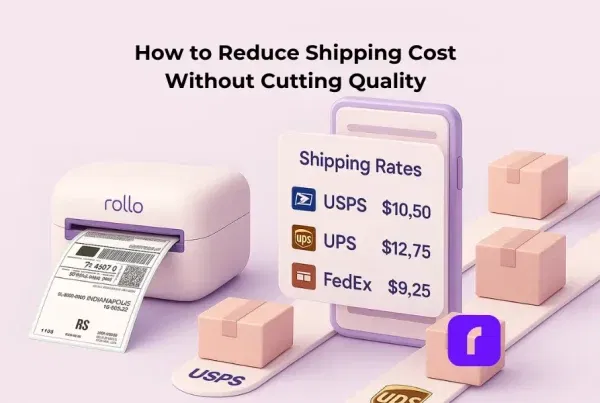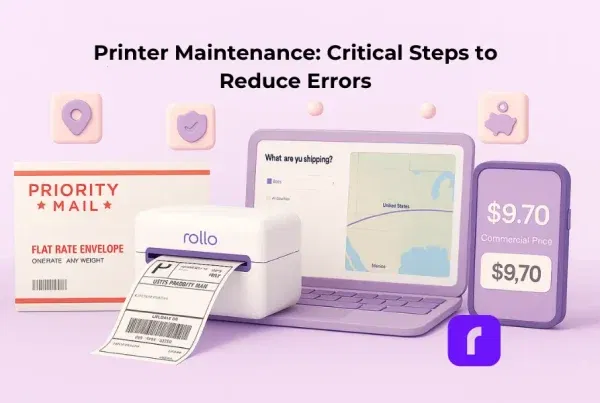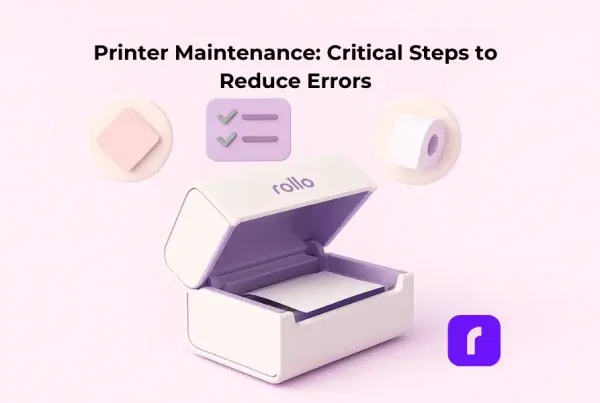Managing your shipping documents can feel like spinning plates—one slip and the whole shipment comes crashing down. Shipping documents are the passports your packages need to cross borders, clear customs, and arrive on-time. If you’re an online seller or a growing small business, you’ve probably wrestled with commercial invoices, packing lists, or a bill of lading at least once. The good news? You don’t need pricey software or a full logistics team to keep everything straight. In fact, there’s a free, surprisingly simple way to stay organized, cut errors, and ship with confidence. Let’s dive in.
Table of Contents
What Are Shipping Documents?
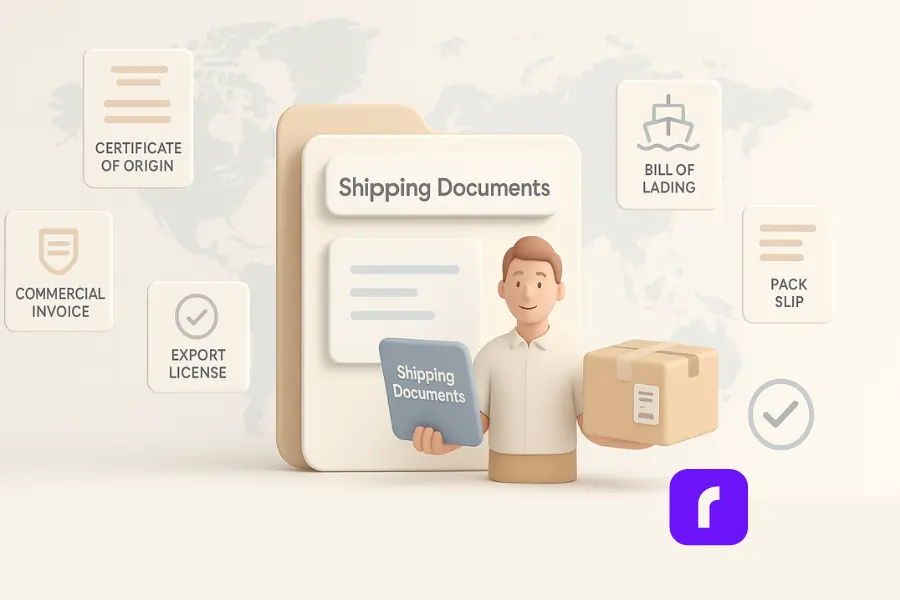
Picture your shipment as a world traveler. Just like a tourist needs identification, your package needs paperwork that explains who it is, where it’s going, and why it’s on the move. These files, collectively called shipping documents, include important shipping documents like the commercial invoice, certificate of origin, and bill of lading. Together, they serve as customs documents that help shipments clear customs and reach their final destination.
Understanding Customs Documents and Their Role in Shipping
These important documents act as your shipment’s passport, ensuring it meets international regulations and clears customs without delays. Most small businesses run into a core set of documents:
- 📄 Commercial Invoice – The “receipt” that shows the buyer, seller, item value, and payment terms.
- 📦 Pack Slip – A checklist of every item in the box, including weight and dimensions.
- 🚚 Bill of Lading or Air Waybill – The contract between you and the carrier that states who owns the goods in transit.
- 🌍 Certificate of Origin – Proof of where the product was made (handy for free‑trade agreements).
- 🛡️ Export License or Shipper’s Export Declaration – Permissions and stats required for controlled or high‑value goods.
The pack slip is often overlooked, but it plays a critical role in the shipping process. Discover why packing slips are essential for smooth shipments.
Leave any of these blank or inaccurate and your shipment can be sidelined by customs officials, slapped with customs duties, or turned back altogether. For small and medium‑sized businesses juggling customer expectations and thin margins, delays kill trust and drain profits fast.
The Hidden Problem with Shipping Documents
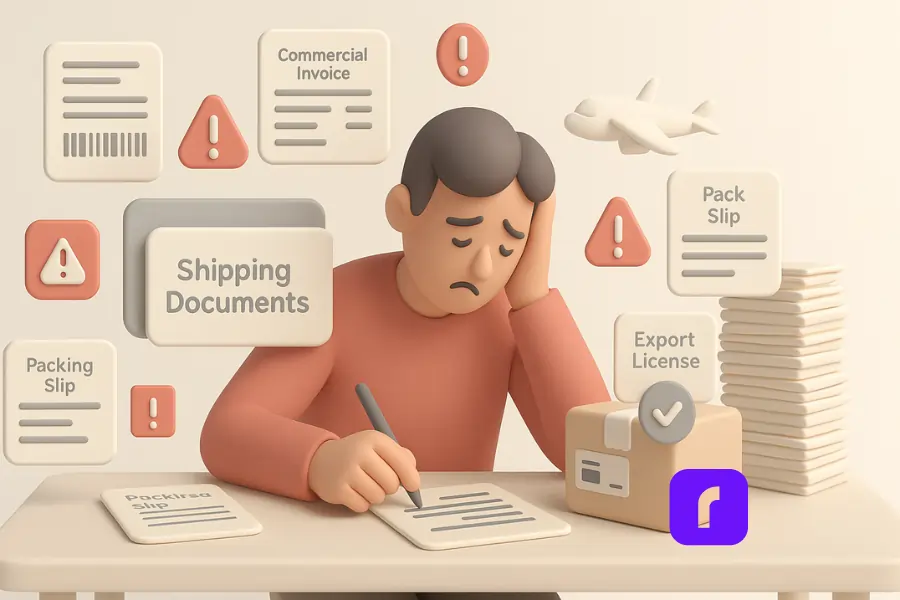
Most sellers create shipping documents by hand or copy‑paste order details into half a dozen online forms. That manual process comes with three big headaches:
- Human error. A single typo in an address or Harmonized System code can trigger a week‑long customs hold.
- Wasted time. Re‑keying the same information into labels, invoices, and packing lists steals hours from marketing, customer service, or product development.
- Unexpected costs. Mistakes often lead to repeat shipments, penalty fees, or pricey “rush” services to make up for lost time.
Large enterprises solve this with integrated enterprise resource planning (ERP) tools and custom APIs. SMBs seldom have that luxury. Instead, they need a lean approach that zaps errors before they happen—preferably without adding a line item to the budget.
The Free Solution: How Rollo Levels the Playing Field
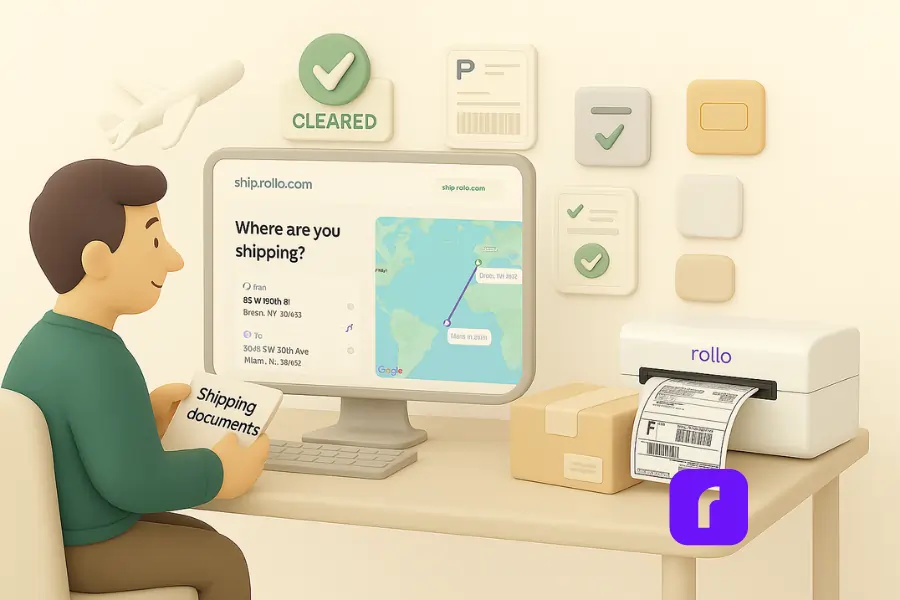
That lean approach exists, and it’s called Rollo Ship. Rollo Ship is a free web and mobile app that plugs directly into major e‑commerce platforms—Shopify, Etsy, eBay, WooCommerce—and pulls your order data into one dashboard. From there you can:
- 🏷️ Generate shipping labels at carrier‑discounted rates
- 📝 Auto‑populate commercial invoices and customs forms
- 🖨️ Batch print packing slips in a single click
- 🗂️ Store, reprint, or duplicate documents for future orders
Paired with the Rollo Wireless Thermal Printer, your labels print in seconds—no ink or toner required—while the paperwork stays synced in the cloud. If you don’t have the printer yet, you can still use the app for digital docs and standard desktop printing at zero cost.
Ready to Simplify Shipping Documents and Save Hours Every Week?
With Rollo Ship, you can create and manage all your shipping documents—commercial invoices, packing slips, customs forms, and more—in just a few clicks. No fees, no confusion, just smooth, accurate shipping that keeps your orders moving and your customers happy.
Get every label right, avoid costly delays, and streamline your shipping process—without the headaches of manual paperwork or expensive software.
Why These Documents Matter for Customs Clearance and Global Trade
Accurate shipping documents—like the commercial invoice, bill of lading, air waybill, and certificate of origin—are essential for clearing customs quickly and avoiding delays or extra customs duties. Rollo helps small businesses manage these customs documents easily, so you can ship across borders with confidence.
Real‑world impact: Marcie’s Candle Co., a two‑person Etsy shop, trimmed weekly fulfillment time from six hours to three after switching to Rollo. “Before, we’d copy order details into three different forms,” Marcie says. “Now we click once and everything—invoice, customs form, shipping label—prints together. No monthly fees, no learning curve.”
Step‑by‑Step: Manage Shipping Documents for Free
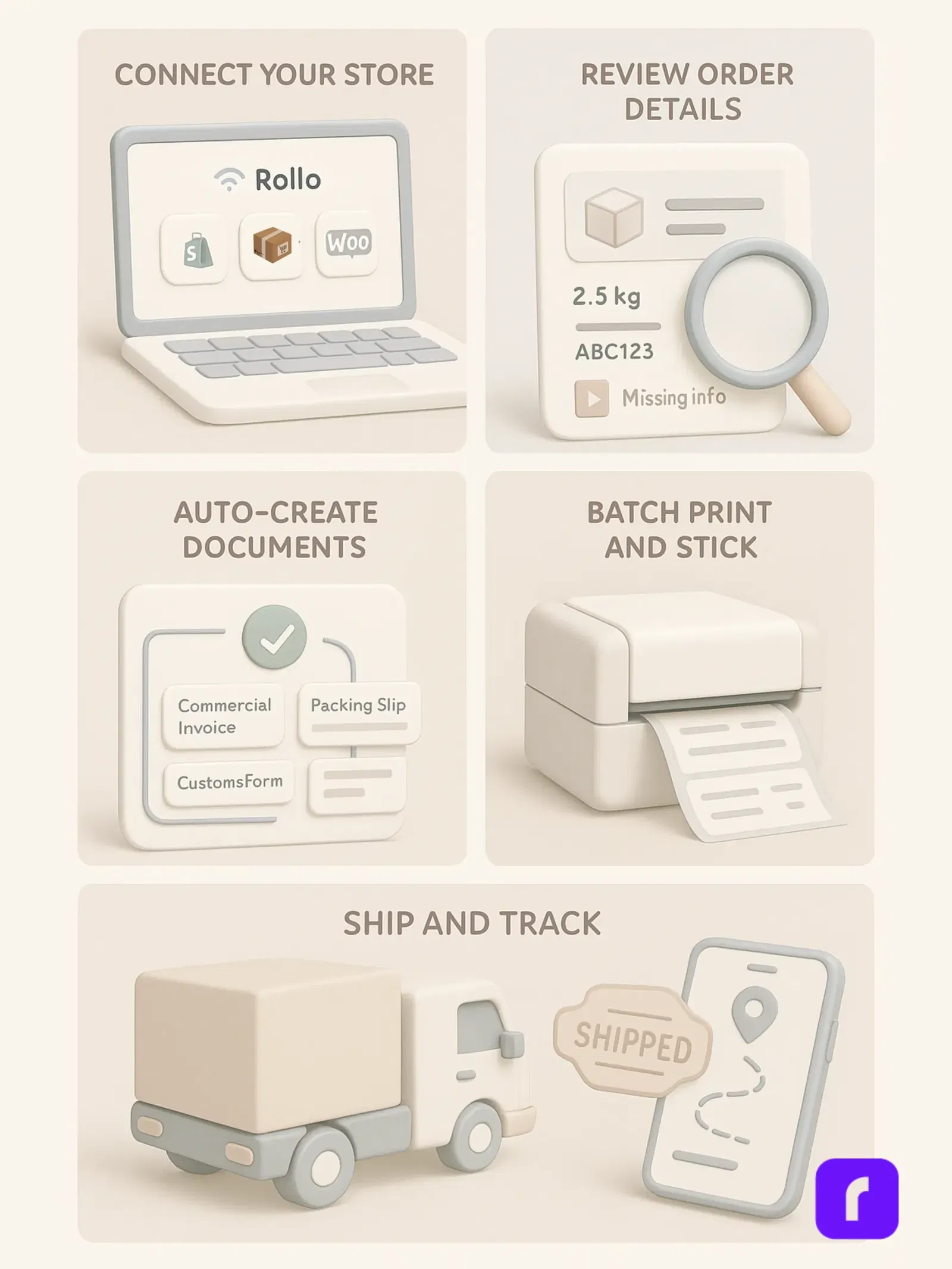
Step 1: Connect Your Store Sign up for Rollo Ship (it takes about a minute) and link your selling channels. The app pulls live orders and buyer addresses automatically.
Step 2: Review Order Details Check that product descriptions, weights, and values are accurate. The system flags missing fields—say, a SKU without weight—so you can fix issues before labels print.
Step 3: Auto‑create Documents Select the orders you want to fulfill. Rollo Ship fills in the commercial invoice, packing list, and customs declaration using your store data. No retyping.
Step 4: Batch Print and Stick If you own a Rollo printer, connect via Wi‑Fi and press Print. Labels and packing slips feed out in seconds. No Rollo? Download PDFs and print on standard paper.
Step 5: Ship and Track Drop packages with USPS, UPS, FedEx, or DHL, then watch real‑time tracking inside the Rollo dashboard. Each shipment’s documents stay linked for easy reference if a customer question pops up later.
Want to print faster, save on ink, and keep your labels looking crisp?
The Rollo Wireless Printer makes it easy—no ink, no toner, just high-quality labels that work with Rollo Ship and shipper requirements. Bundle it with a shipping scale and 4×6 label stack to supercharge your workflow!
Why “Free” Doesn’t Mean Cutting Corners
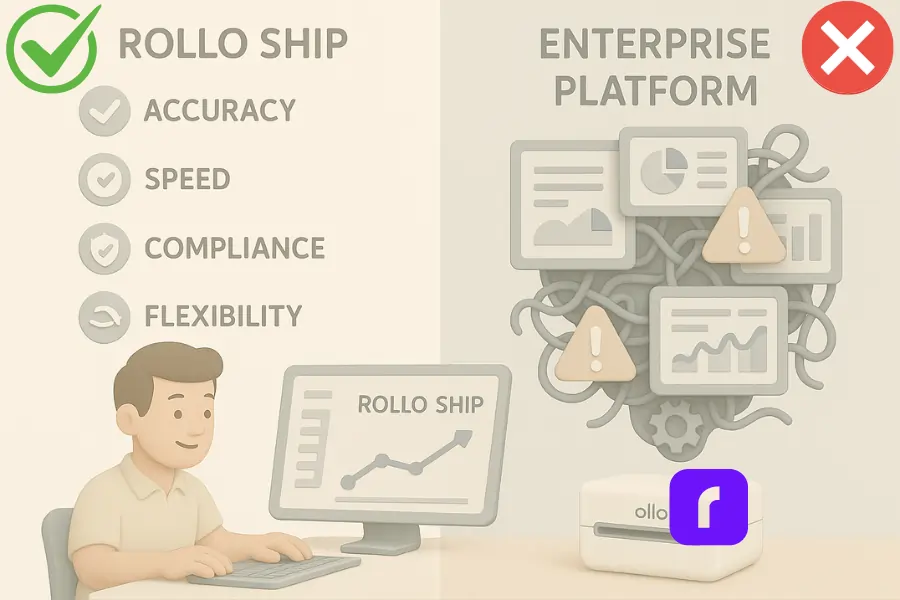
It’s fair to wonder how a no‑cost tool stacks up to paid platforms. For SMBs, Rollo’s free tier hits the essentials:
- 🎯 Accuracy. Automated field validation catches missing phone numbers or undersized package weights before the label prints.
- ⚡ Speed. Orders import instantly, so fulfillment scales as you grow.
- 📋 Compliance. Rollo’s commercial invoice template meets major carrier and customs standards.
- 🔄 Flexibility. Upgrade only if you need premium features like advanced analytics or automation rules.
In short, you’re not sacrificing quality—you’re sidestepping bloated features built for companies a hundred times your size.
Export Packing Lists and Other Shipping Documents
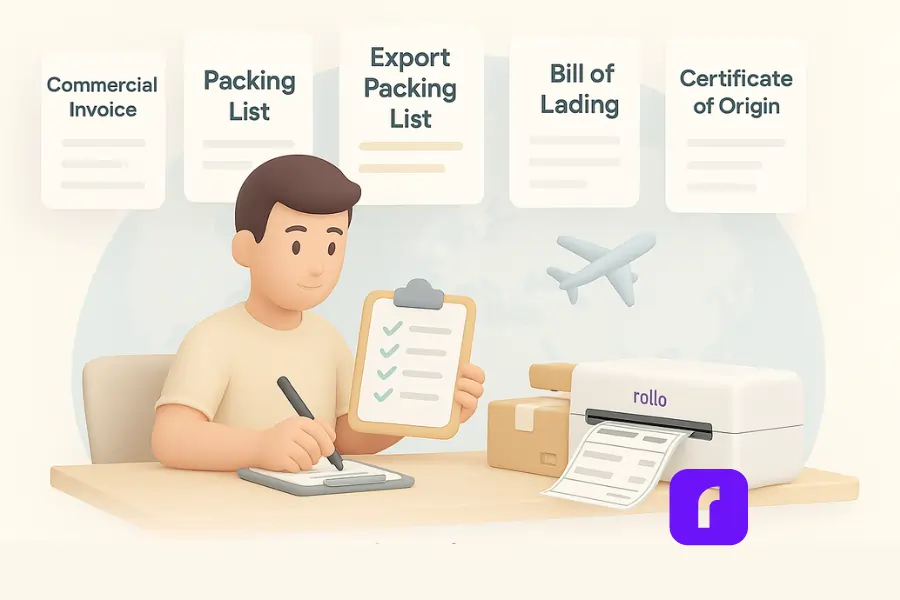
Before you hit “print,” it’s smart to double-check which shipping documents you need based on your order details, shipping method, and destination. Whether you’re sending a package across town or around the world, having the right paperwork on hand can save you from customs delays, extra fees, and frustrated customers.
This table gives you a fast reference for the most important shipping documents and when to use them.
| Document | Purpose | When It’s Required |
|---|---|---|
| Commercial Invoice | Proof of sale and item value | All international shipments |
| Packing List | Shows what’s in each box | Recommended for all shipments; essential for exports |
| Bill of Lading | Contract with carrier; title of goods | Freight and ground shipping |
| Air Waybill | Air‑freight version of bill of lading | Air cargo |
| Certificate of Origin | Verifies manufacturing country | Shipments seeking duty relief |
| Export License | Government approval for controlled goods | Items with export restrictions |
For small businesses, staying organized with these documents is key. Print this table or bookmark it as a handy checklist to use every time you pack an order—Rollo Ship makes it easy to keep your shipping documents in one place, ready to go.
Final Words
Shipping paperwork doesn’t have to be the grim part of owning an online store. With shipping documents auto‑generated in Rollo Ship, you can stop juggling spreadsheets, dodge costly errors, and focus on growing sales—not filling forms. Best of all, you can start today without paying a cent.
Ready to streamline your shipping workflow? Sign up for Rollo Ship, download the app, and see how quickly your next batch of orders prints, sticks, and ships—for free. Your future self (and your customers) will thank you.
Follow Rollo on:
Frequently Asked Questions About Shipping Documents
📌 Q: What is the most important shipping document for international shipments?
💭 A: The commercial invoice is the most important shipping document when shipping internationally. It shows the value, description, and destination of the goods shipped. Customs officials use the commercial invoice to check the shipment, decide on customs duties, and make sure everything is legal.
📌 Q: Can I really manage shipping documents for free?
💭 A: Yes! With Rollo Ship, you can create shipping labels, commercial invoices, packing lists, and other important shipping documents without paying extra. This helps you save time and avoid mistakes when shipping both inside and outside your country.
📌 Q: How can I avoid mistakes on shipping documents?
💭 A: Mistakes happen when you type in the wrong details, like an address or product code. Using a tool like Rollo Ship makes this easy by pulling information from your orders. It helps you fill in shipping documents like the commercial invoice, packing list, or bill of lading. Always double-check the details like Harmonized System (HS) codes, weights, and final destination before shipping.
📌 Q: Do I need a printer to use Rollo Ship?
💭 A: No, you can use Rollo Ship without a printer. If you have a Rollo printer, you can print shipping labels quickly. But if not, you can still download shipping documents like commercial invoices and air waybills and print them on any regular printer.
📌 Q: How do I know which shipping documents I need?
💭 A: The shipping documents you need depend on where you’re sending the package and what’s inside. For example, international shipments usually need a commercial invoice, packing list, certificate of origin, and air waybill or bill of lading. If you are shipping dangerous items like chemicals, you may need a safety data sheet or export license. A freight forwarder or logistics company can help you figure out which documents you need.
📌 Q: What happens if I make a mistake in my shipping documents?
💭 A: If your shipping documents have errors, your shipment might get stuck with customs delays, extra customs duties, or even returned. For example, a mistake on the commercial invoice or a missing shipper’s export declaration can hold up the customs clearance process. That’s why it’s so important to get the details right.
📌 Q: Do I need different shipping documents for domestic and international shipping?
💭 A: Yes! Domestic shipping usually just needs a shipping label, packing list, and bill of lading. For international shipping, you need more documents, like a commercial invoice, export license, certificate of origin, and sometimes an insurance certificate or pro forma invoice. The exact documents vary depending on the destination country and the goods you’re shipping.
📌 Q: What’s the difference between a pro forma invoice and a commercial invoice?
💭 A: A pro forma invoice is like a draft or estimate. It gives details about what’s being sold but isn’t a legal document for customs clearance. A commercial invoice is the final, official document that customs uses to check your shipment, assess duties, and clear customs.
📌 Q: Can I use Rollo Ship for international shipping?
💭 A: Yes! Rollo Ship works for both domestic and international shipping. It helps you create key international shipping documents like the commercial invoice, air waybill, packing list, and certificate of origin, so your shipment can clear customs in the destination country.
📌 Q: How do I know if I need an export license or certificate of origin?
💭 A: You may need an export license if you’re shipping hazardous materials, restricted products, or items controlled by law. A certificate of origin is needed if your shipment qualifies for duty-free treatment under free trade agreements. It depends on what you’re shipping and where you’re shipping to. Check with a freight forwarder or customs authorities if you’re unsure.
